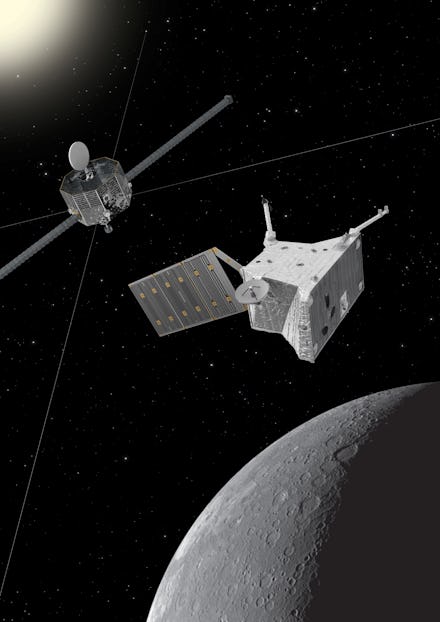Scientists are going to Mercury to see why it looks like it’s shrinking

Mercury has proven itself to be a special planet. Some scientists think it might be shrinking — even though it’s already the tiniest member of our solar system — and others speculate that it has volcanoes and water ice. Now, a spacecraft called BepiColombo is scheduled for a mission to uncover the truth.
The BepiColombo spacecraft, the product of a partnership between the European Space Agency and Japan’s JAXA space agency, will launch in October 2018 for the third-ever mission to reach Mercury. Understanding Mercury has so far been a difficult process, since spaceships have to enter the planet’s unusually thin atmosphere very slowly to avoid smashing into its surface upon arrival. Instead, BepiColombo will have to artfully enter with a series of fly-bys, once around Earth and multiple times around Venus and Mercury. It’s a time-consuming process, but the good news is that BepiColombo has a camera to make the journey worthwhile.
“Mercury is the least explored of the rocky planets, but not because it is uninteresting,” Professor Alvaro Giménez Cañete, the director of science at the European Space Agency, told the Guardian. “It’s because it’s difficult – difficult to get there, even more difficult to work there.”
Telescopes on Earth don’t quite suffice when it comes to studying Mercury, since the sun gives off a bright glare. And though space exploration missions to better understand the planet date back to the 1970s with Mariner 10, working with Mercury’s “pizza oven” conditions is particularly challenging for craft designers. The last mission, launched in 2011 with NASA’s Messenger, crashed in 2015.
Scientists just made the final round of tests on BepiColombo after delaying their mission due to “a problem in one of [its] power processing units.” From here on, they’ll cross their fingers that the space craft holds up in Mercury’s unbelievable heat and radiation. If successful, scientists expect to gather some key information about the birth of our solar system.